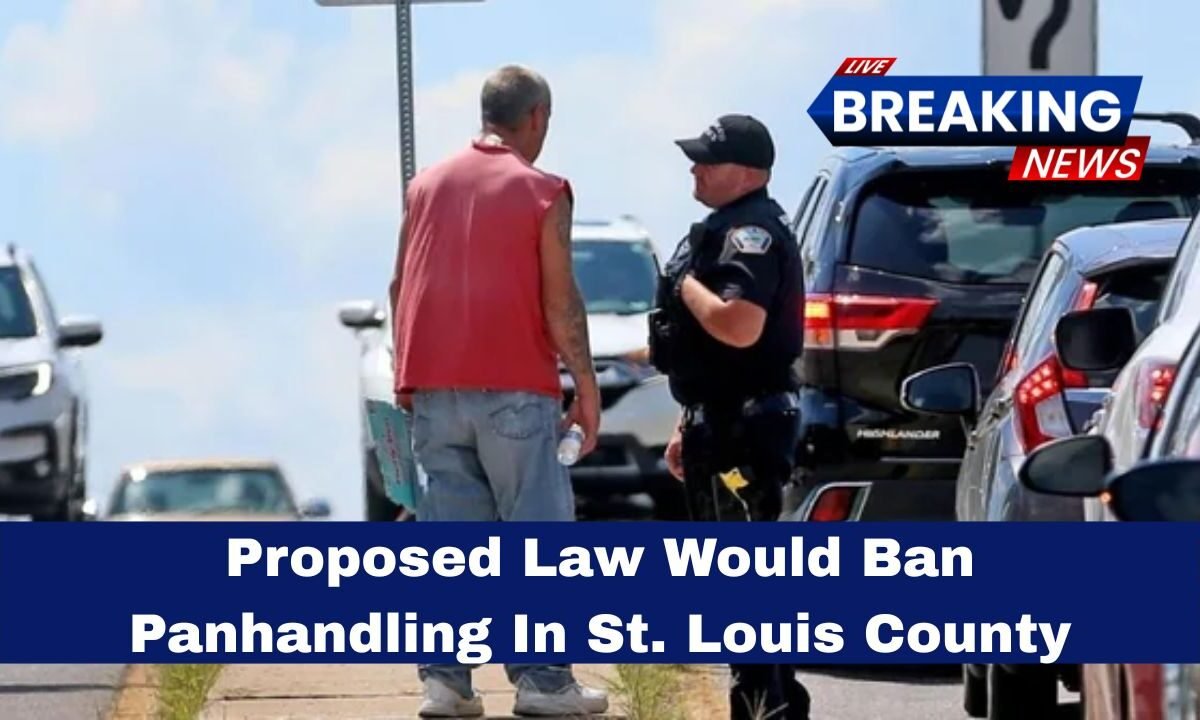A St. Louis County councilmember, Michael Archer (District 6), says he will introduce a proposal to restrict panhandling on busy county roadways.
The plan would ban people from standing in traffic lanes and on medians to solicit, with the stated goal of improving public safety and reducing near-miss incidents at congested intersections.
Supporters frame the measure as a neutral roadway safety rule; critics worry it could further marginalize unhoused residents and chill First Amendment activity.
What The Proposal Covers
Archer’s draft is expected to target the location and behavior—not the content—of requests for aid.
Key elements likely include: keeping pedestrians out of live traffic lanes, limiting median occupation at narrow or high-speed intersections, and clarifying where roadside interactions are permitted.
The bill is anticipated to include time, place, and manner restrictions focused on preventing conflicts between vehicles and pedestrians.
Why Now- Safety Complaints And Intersection Hotspots
County officials have fielded increasing complaints about people soliciting at major intersections and freeway ramps.
Drivers report sudden approaches to car windows, distractions at green lights, and last-second lane changes to avoid pedestrians on narrow medians.
Backers say the ordinance would set predictable rules for high-risk locations while preserving pedestrian activity on sidewalks and safe areas.
The Legal Backdrop: Free Speech Constraints
Courts have repeatedly recognized solicitation for donations as protected speech.
In 2021, St. Louis County’s prior enforcement approach was struck down by a federal judge, and a plaintiff received a monetary award after being repeatedly cited while panhandling.
Any new county rule must therefore be content-neutral, narrowly tailored to safety, and leave open ample alternative channels (e.g., sidewalks) for expressive activity.
That means the ordinance will need clear, objective standards—such as minimum median widths, posted speed limits, or distance from intersections—rather than broad bans on speech.
How The Process Would Work
After formal introduction, the bill typically goes to committee for review, potential amendments, and public comment.
It would then return to the full County Council for votes. Expect robust testimony from civil-liberties groups, homelessness service providers, business owners, and traffic-safety advocates.
If enacted, the County would draft enforcement guidance for police and roll out public education at key intersections.
Quick Facts
| Item | Details |
|---|---|
| Sponsor | Councilman Michael Archer (District 6) |
| Primary Focus | Roadway safety: keep pedestrians out of traffic lanes and off narrow/high-risk medians |
| Who’s Affected | Individuals soliciting from motorists, plus anyone standing/sitting in live lanes or restricted medians |
| Where It Applies | Unincorporated St. Louis County roadways and other county-controlled rights-of-way |
| Stated Rationale | Reduce crash risk, driver distraction, and near-misses at congested intersections |
| Legal Guardrails | Must be content-neutral, narrowly tailored, and preserve alternative channels (e.g., sidewalks) |
| Penalties | To be defined in the final bill text; typically fines/citations for unsafe roadway presence |
| Next Steps | Introduction → Committee hearing → Public comment → Council votes |
Potential Impacts If Passed
Enforcement: Officers could intervene when people enter lanes or occupy restricted medians. Clear standards (posted speeds, median width thresholds) will be crucial to avoid selective enforcement.
Public Services: Advocates are likely to call for parallel investments in shelter beds, outreach, and diversion programs so enforcement does not functionally criminalize poverty.
Legal Scrutiny: Immediate reviews are likely from civil-liberties groups. The ordinance’s durability will depend on objective safety criteria and content-neutral drafting.
Driver Experience: Reduced unexpected stops and window-to-window transactions in live lanes may improve traffic flow and limit rear-end collisions at signals.
St. Louis County’s renewed push to regulate panhandling in traffic lanes and on medians spotlights the delicate balance between roadway safety and free-speech protections.
The proposal’s success will hinge on careful, content-neutral language tied to demonstrable safety risks, plus transparent enforcement and complementary support services.
As the measure moves through hearings and votes, residents should watch for specifics—which locations are restricted, what the penalties are, and how alternative channels are preserved—to gauge whether the county has threaded that constitutional needle.




